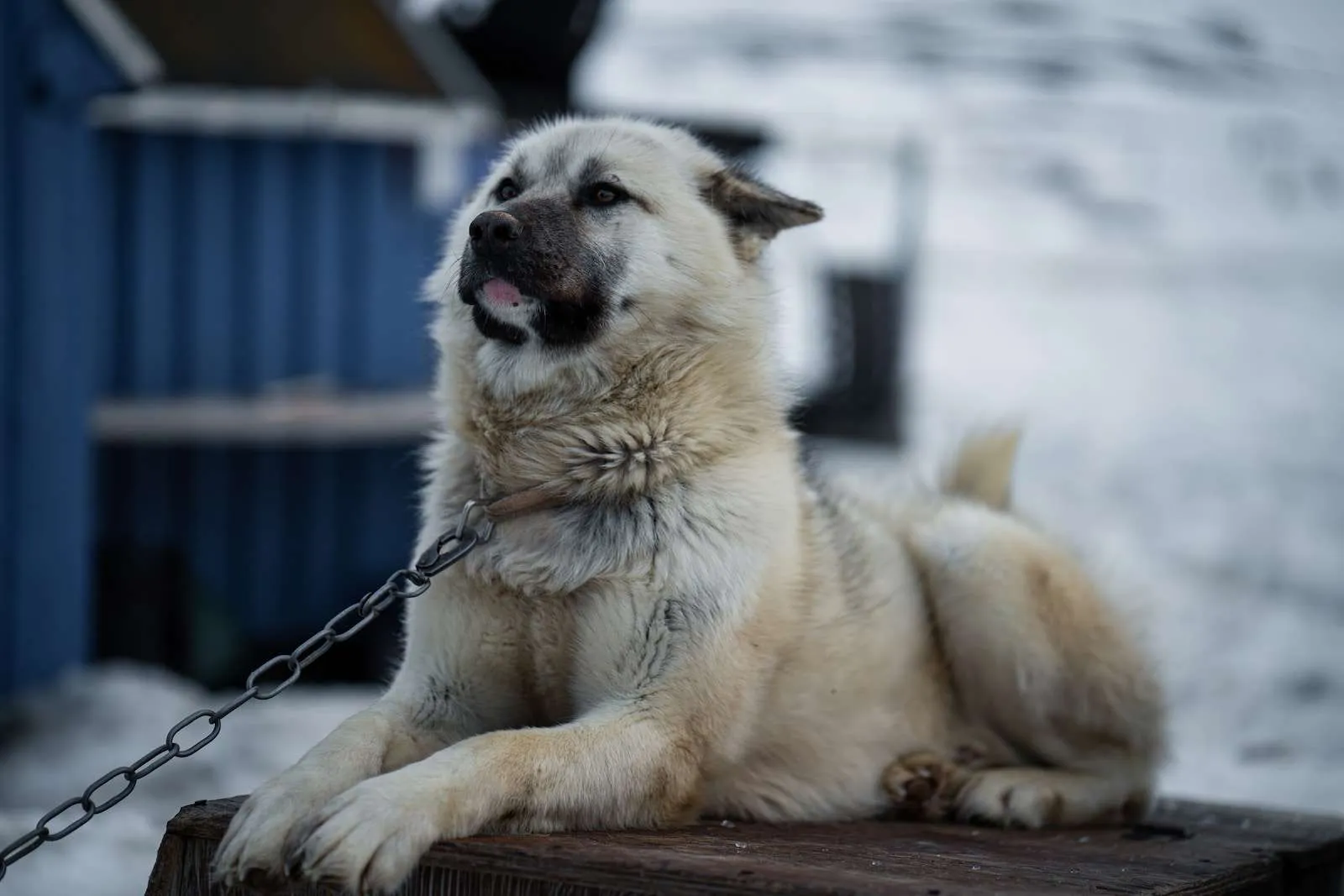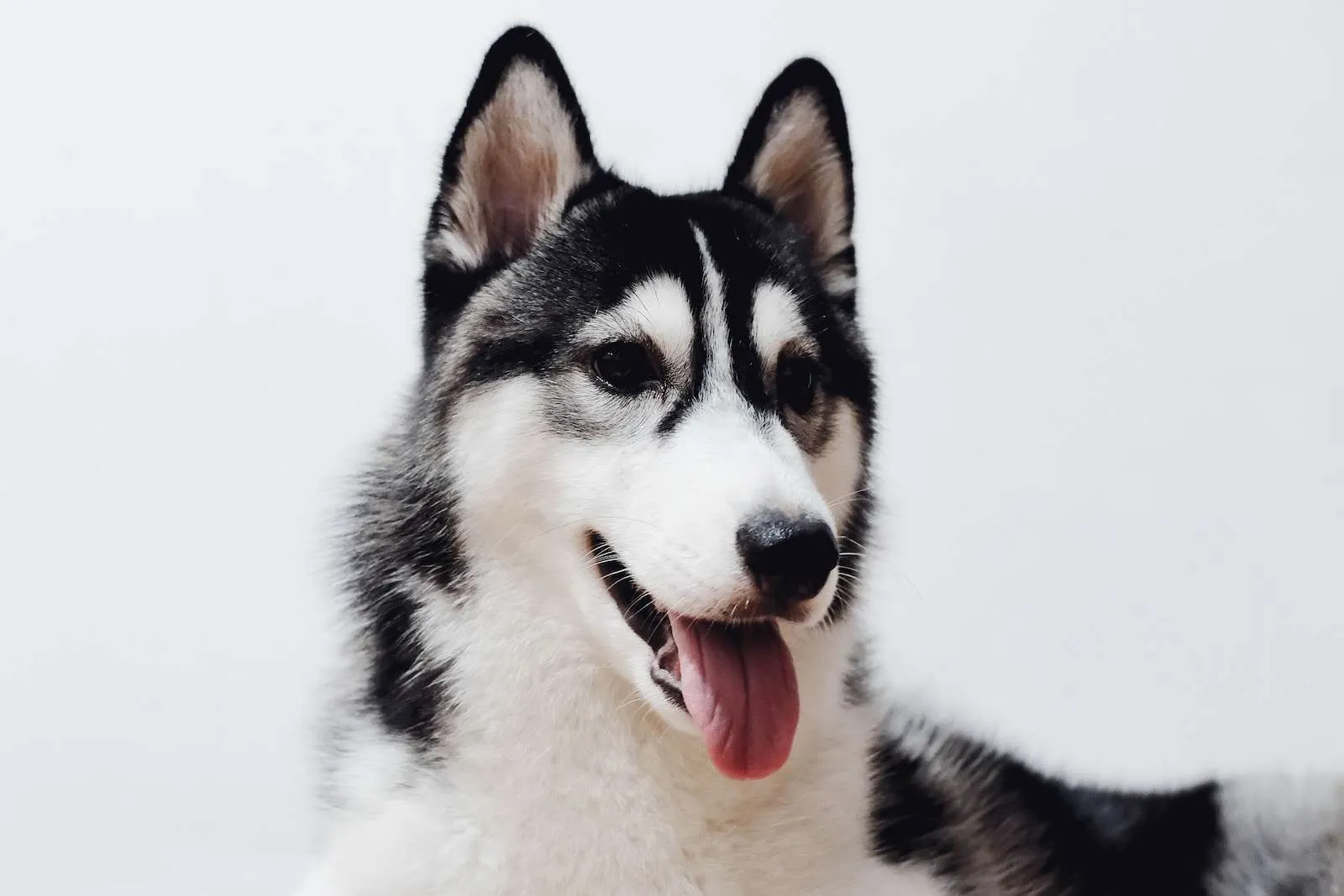Statistics:
- Height: 24 to 28 inches (males), 22 to 26 inches (females)
- Weight: 75 to 100 pounds (males), 55 to 85 pounds (females)
- Life Span: 12 to 15 years
- Diet: High-quality dog food, including a balanced mix of protein, fat, and essential nutrients.
Tamaskan Overview:
The Tamaskan is a relatively new and rare dog breed known for its striking resemblance to wolves. Developed in the 1980s, this breed was created by selectively breeding Siberian Huskies, Alaskan Malamutes, and German Shepherds to achieve the wolf-like appearance without any wolf content. The Tamaskan’s beauty, intelligence, and gentle nature make it a fantastic companion for experienced dog owners who are active and willing to provide plenty of mental and physical stimulation.
Tamaskan Highlights:
- Wolf-Like Appearance: Tamaskans are often mistaken for wolves due to their lupine features, which include a dense double coat, erect ears, and a bushy tail.
- Loyal and Affectionate: Despite their striking appearance, Tamaskans are affectionate and loyal to their families, forming strong bonds with their owners.
- Intelligent and Eager to Please: This breed is highly intelligent and loves to learn, making training an enjoyable and rewarding experience.
Tamaskan Evolution and History:
The Tamaskan breed was developed by Jodie Simmonds in Finland during the 1980s with the goal of creating a dog that looked like a wolf but had the temperament and behavior of a friendly and loyal companion. Tamaskans have no wolf content, and their ancestry can be traced back to Siberian Huskies, Alaskan Malamutes, and German Shepherds. As a relatively new breed, Tamaskans are still not widely recognized by major kennel clubs but have gained popularity among dog enthusiasts worldwide.
Tamaskan Size and Weight:
Tamaskans are medium to large-sized dogs. Males typically stand between 24 to 28 inches at the shoulder and weigh around 75 to 100 pounds, while females are slightly smaller, standing between 22 to 26 inches and weighing approximately 55 to 85 pounds.
Tamaskan Personality:
Tamaskans are known for their friendly, gentle, and affectionate nature. They are intelligent and social dogs, thriving on human companionship and forming strong bonds with their families.
The Adaptability of the Tamaskan:
Tamaskans can adapt well to various living situations, but they require ample space and regular exercise to keep them happy and healthy.
Tamaskan Temperament:
Tamaskans are generally good-natured and get along well with children and other animals if properly socialized from an early age.
Tamaskan Maintenance and Grooming:
The Tamaskan’s dense double coat requires regular grooming to keep it clean and free of tangles and matting. They shed moderately throughout the year, with heavier shedding during seasonal changes.
The Trainability of the Tamaskan:
Tamaskans are intelligent and eager to please, making them highly trainable. Positive reinforcement training methods work best with this breed.
Exercise Needs of the Tamaskan:
As an active and energetic breed, Tamaskans require regular exercise and mental stimulation to prevent boredom and maintain good behavior.
Tamaskan Health:
- Hip Dysplasia: A hereditary condition affecting the hip joints, leading to pain and mobility issues.
- Eye Issues: Tamaskans may be prone to certain eye conditions, including progressive retinal atrophy (PRA) and cataracts.
- Heart Conditions: Some individuals may be predisposed to certain heart conditions, such as dilated cardiomyopathy.
Tamaskan Care:
Regular veterinary check-ups, a balanced diet, and regular exercise are crucial to maintain the health and well-being of Tamaskans.
Tamaskan Feeding:
A high-quality, nutritionally balanced diet that meets the energy needs of active dogs is essential for Tamaskans.
Tamaskan Coat Color and Grooming:
Tamaskans have a thick double coat that comes in various colors, including gray, red, and black. Regular grooming is necessary to keep their coats clean and healthy.
Tamaskan and Children:
Tamaskans are generally good with children and can be wonderful family pets when properly socialized and trained.
Tamaskan and Other Pets:
With proper socialization, Tamaskans can coexist peacefully with other pets, including dogs and cats.
Similar Dogs:
- Alaskan Malamute: Both breeds share a wolf-like appearance and are known for their strength, endurance, and loyalty.
- Siberian Husky: Like Tamaskans, Siberian Huskies are intelligent, energetic, and affectionate dogs bred for sledding and working in cold climates. Both breeds are excellent family pets and enjoy being part of an active household.


